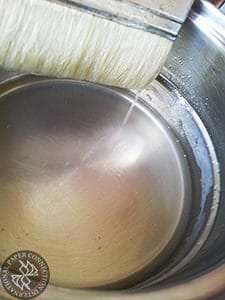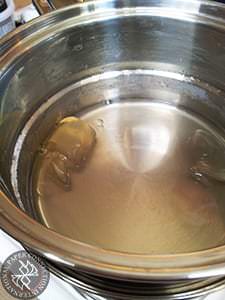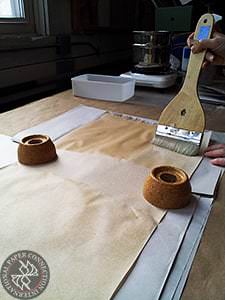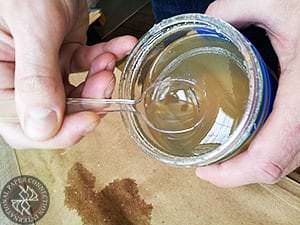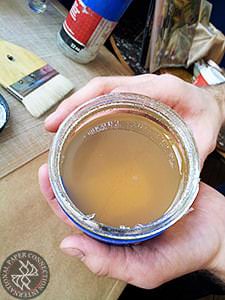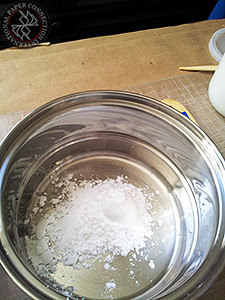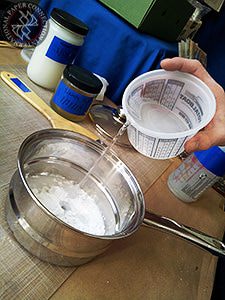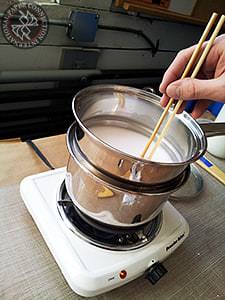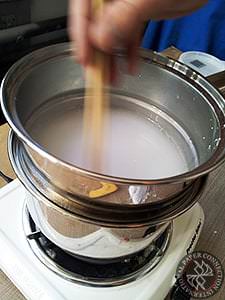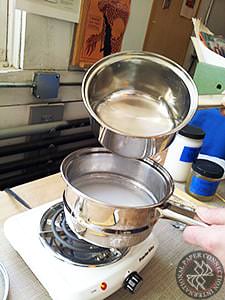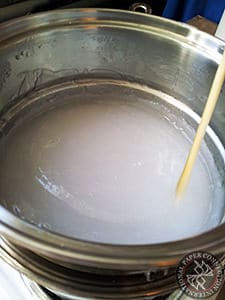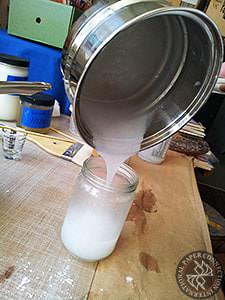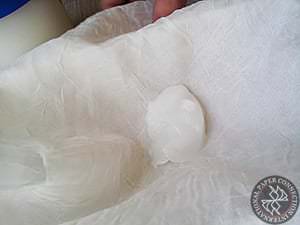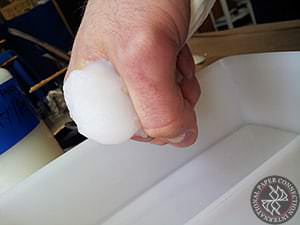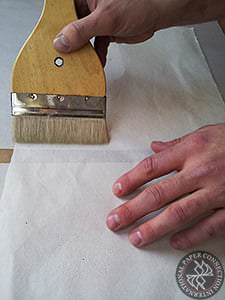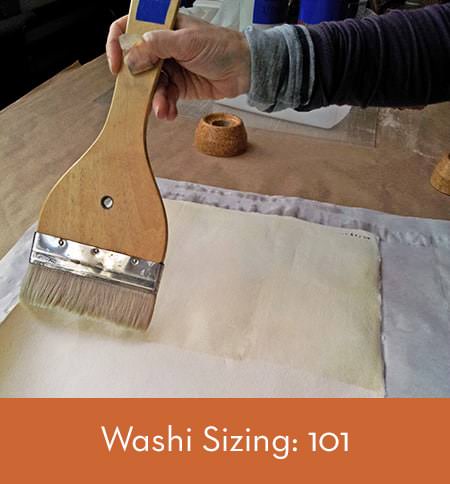 Many of our readers are quite knowledgeable when it comes to sizing your own paper, especially sizing your “go-to” paper.
Many of our readers are quite knowledgeable when it comes to sizing your own paper, especially sizing your “go-to” paper.
Here is a step-by-step “recipe” for cooking up your own sizing and applying it to your favorite Eastern paper.
The photos shown here are mostly depicting sizing made from wheat starch. Nope!, it’s not a gluten-free, but not a problem for the paper, and a nice alternative to animal-based sizing.
Exciting news regarding plant-based sizing… last night we received a new Eastern paper, already pre-sized with devil’s root starch, “konnyaku” -no animals used at all with this process, only human labor. Photos will be posted soon on social media.
We have entertained many varying viewpoints on sizing and sizing recipes. What are yours? Please share below, along with your experiences in making your own sizing. In the meantime, enjoy our sizing tests, made in our paper “kitchen”, here in Providence.
Adding sizing to paper affects the paper fibers’ sensitivity to humidity, absorption, and bleeding. There are many materials that can be used to size paper; we will cover the sizing procedure for gelatin size and wheat paste. It is not unlike cooking, where 90% of the procedure is preparation. This method allows for easy application with a large soft-bristle brush.
Gelatin Sizing Recipe:
This is the recipe for rabbit skin glue that can be used to size paper. (Please note: the gelatin size will need to be prepared 8-12 hours in advance.) What you will need:
- Rabbit skin glue: 1/3 Cup (powdered or solid sticks)
- Crystalline Alum: 1 Pinch (potassium aluminum sulfate)
- Double boiler with lid (a glass jar and sauce pan will also work)
- 16–32 oz. plastic / glass container (glass is recommended)
- Soft-bristle brush
Step One: Soak the glue in a quart of cold water for several hours until it swells and softens. (With solid sticks this may take overnight or 12+ hours).
Step Two: Once the glue has softened and becomes gelatinous, heat in a double boiler. The mixture should be stirred continuously until the gelatin has dissolved and the glue has become one consistent solution. (Note: never allow glue to boil). Remove from heat and stir in 1 pinch of alum. Allow the glue to cool slightly and apply warm to your paper. Apply one coat to the side you intend to use and allow to dry completely on newsprint. Additional coats may be added as necessary.
The remaining size solution can be saved in a jar in the refrigerator, and only requires heating to be used again. Note that storage length will vary from weeks to even months depending on several factors. Water quality is most important – bacteria and particulates can promote mold, and temperature should not be extreme. Solution should not freeze nor temps be too high.
Wheat Paste Recipe:
This is the recipe for wheat paste that can be used to size paper.(Please note: the wheat paste will need to be prepared one day in advance.) What you will need:
- Wheat starch: 1/3 cup
- Double boiler with lid (a glass jar and sauce pan will also work)
- 16–32 oz. plastic / glass container (glass is recommended)
- Measuring cup (1/4 cup – 1/2 cup size)
- Soft-bristle brush
- Nylon fabric
Step One: Fill the bottom of the double boiler with cold water and place on your heat source at a medium heat setting and bring to a low boil. (Alternatively, if you do not have a double boiler a glass jar placed in a saucepan works as well. Add enough water to submerge 1/3 of the jars height.) 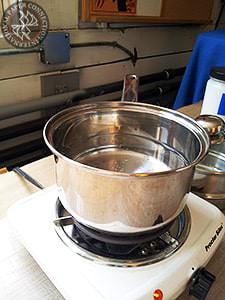
Step Two: While you are waiting, measure out your wheat starch and water. We used a 4:1 ratio. 4 parts water to 1 part wheat starch: 11/3 cup of water to 1/3 cup of wheat starch. Mix the starch and water together in the top pan of the double boiler, (or the jar for those who are not using the double boiler) Mix thoroughly, making sure none of the starch has stuck to the bottom. The resulting mixture should be an opaque white solution resembling milk.
Once you have mixed the ingredients place the pan over the boiling water (or place your jar in the pan) and stir continuously until the mixture begins to thicken. The mixture will thicken to the consistency of heavy cream and small “chunks” will begin to form. Continue stirring until smooth and the mixture has the consistency of custard.
Step Three: Now the mixture can be covered and allowed to cook over a low boil for 25 minutes, with a quick stir every 5 minutes. The paste should continue to thicken and become somewhat translucent as it cooks. After you’ve allowed the paste to cook, add small amounts of hot water from the pan to your mixture and stir until the paste is smooth and custard like.
Pour the paste from your pan into your designated container and allow it to cool in a refrigerator over night. This is to allow the paste to gel into a homogeneous solid.
Step Four: Once the paste has gelled, wring a small amount through a piece of fabric: nylon, cotton, handkerchief, etc… Slowly add small amounts of water and mix with a brush until the paste is thin enough to apply with a brush to your paper. Apply one coat to each side and allow to dry completely on newsprint. Additional coats may be added as necessary.
Remember: As with all size, test for each use, and dilute as appropriate. If in doubt, thin and apply multiple coats. Allow the paper to completely dry between each coat. The best way to learn how much size to use, and when to use it is through experience and experimentation.


